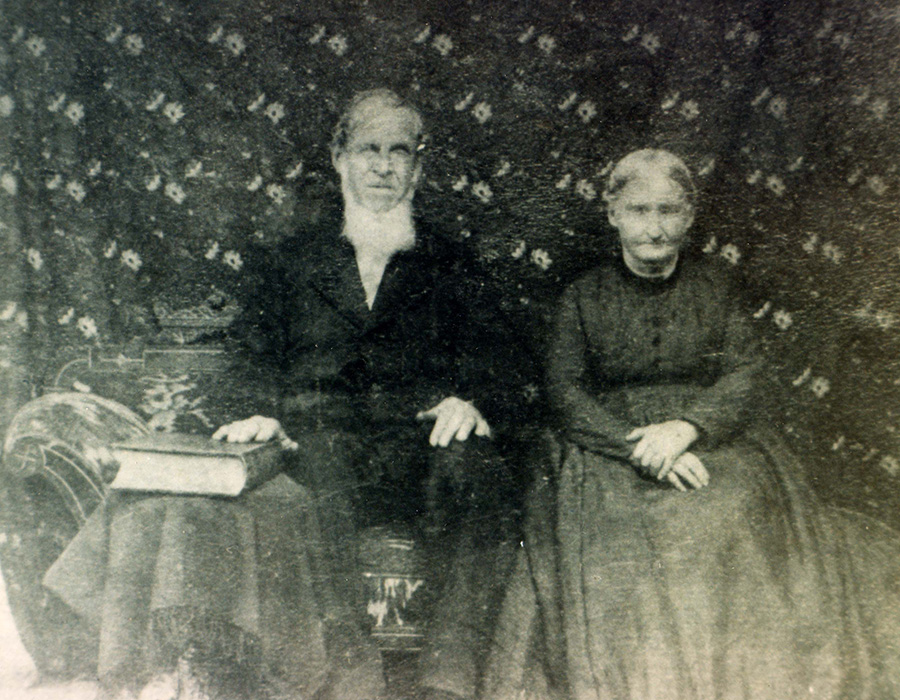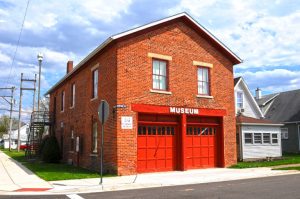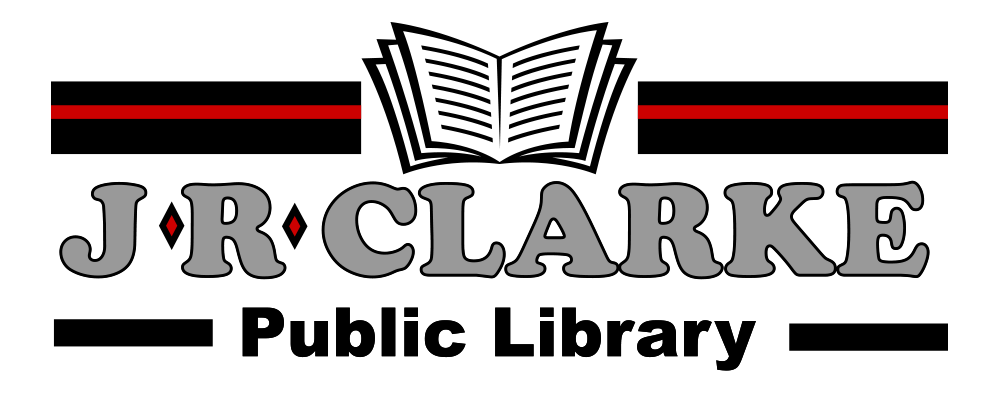
By Ralph and James Boggs (1953)
On the first Monday in April 1835 the first election was held in Covington which resulted in the election of Gilbert D. Adams, Mayor, William Robinson, recorder, and Charles Orwan, Joshua Orr and Thomas McKinzie, trustees (later called councilmen).
On July 11, 1835 a constitution was adopted and Covington started on its career as a full fledged municipal corporation of the great commonwealth of Ohio. The officers provided for in the construction were as follows; mayor, recorder, trustees three, marshall, supervisor and collector, last three being appointed by the council. On July 30, 1835 seven ordinances were passed providing in many ways for the welfare of the community. The salaries of the council were fixed at twenty five cents for each day and twelve and one half cents for each night served in that capacity.
Things ran very smoothly until May 3, 1839 when the council imposed the first tax which was twelve and one half cents per head on swine, over three months old, that were allowed to run at large throughout the town. This tax created a great howl among the people but the tax remained.
A re-organization of the corporation was made in 1850 and on March 22 of that year an act was passed by State Legislature amending the charter of the village which fixed the corporation in the 1837 election, the mayor and recorder refused to serve limits and were fined two dollars each and the council appointed two men to fill their places. On May 17, 1841 the first ordinance pertaining to side walks in the village was passed. In 1842 the first hooks and ladders were purchased for a fire department and the first city fire examiners were appointed. The office of tax collector was established this same year with Henry Carmichael being appointed the first tax collector. In 1945 the council approved the erection of a bridge at the foot of Pearl Street on Piqua Turnpike.
The mayors of this period were: Gilbert D. Adams 1835, 1836, and 1837; Samuel Patterson elected in 1837 and refused to serve; Jeremiah Shade 1838; Noah Dewey 1839; Joseph Leonard 1840; George Deprees 1841; Andrew Diltz 1842, 1843, 1844, 1845; William Ross 1846; Andrew Diltz 1847; Joseph Leonard 1848; C. W. Carlton 1849 and James Purdy 1850 but replaced by B. Neff (1850) when the corporation was reorganized. The councilmen of this day were many but a few held the office for a number of years; Dr. R.N. Cox six years.; John Patterson six years; John Sowers six years; William McDowell five years and Hamilton Bartmess four years. The office of Treasurer was held held by only six men in this period with Samuel Ullery holding the office five times and Dr. Cox and Andrew Diltz each three years. The Marshalls were many and only one man held the position for any length of time, that being Joseph Marlin who was marshall three years. The office of Recorder also changed hands many times and here, too, only one man held the office longer than one year, he being James Purdy who served for four year.
In 1830 the Troy-Greenville Road was, commenced which was to pass through Covington. This road was mud all the way and after a short time a few Trojans decided to build a better one. They constructed a plank road but the plank soon rotted in the swampy ground and forced the trial of gravel which proved to be a success. This road was finally completed in 1845 being the first gravel road in the county. It entered Covington on the east and continued down Wright Street and crossed the river just north of the present water works building and continued on west to Greenville. The first road built in Newberry Township was in 1816 but passed through Clayton to the north, having been the Piqua-Greenville Road. The Troy-Greenville Road was the first commenced in Covington but not the first completed.
In 1838 the businessmen of Dayton, seeing the importance of the increasing trade of the Stillwater Valley and foreseeing the danger of its being diverted to the just completed Miami Canal, organized the Dayton and Covington Turnpike Co., secured stock and began construction in 1839. When the success of this venture was secure and well under way Piqua moved to connect themselves with the Dayton-Covington Turnpike in order to secure the rich farm products from the Stillwater Valley and Darke County. They formed a company and bridged the six miles of black swamp between the Miami and Stillwater Rivers with the Old Covington Pike. The Dayton and Covington Pike was completed in 1841 and the the Piqua-Covington Pike joined it in 1843. This made Newberry Township the first in the county with three turnpikes and gave Covington a daily mail and stage route.
THE BAPTIST CHURCH, the first church erected in Covington, was built in 1835 where the Shafer and Boehringer Blacksmith shop now operates. Here also was located the first cemetery in Covington which was just south of the church and later moved to Highland Cemetery.
1836 was a cold summer with frost every month and a snowstorm in August. The first Methodist Church was erected this year on Pearl Street but the very next year was destroyed by a huge oak tree which toppled on the church during a cyclone. School at this time was held in this church and also in a building on the southeast corner of High and Broadway.

1837 saw the first school house erected in the confines of Covington which was a frame structure built on the southwest corner of Main and Spring Streets. The population of the town increased rapidly and a few years later larger quarters were needed to conduct classes. The frame school was sold and a new two story building was build on the southeast corner of Spring and Pearl Streets. John and Ezekiel Ainsworth were the first teachers here. Caleb Worley organized the Covington Christian Church in a school house this year and the Troy- Greenville Road was rebuilt.
The Bethel Cumberland Presbyterian Church was organized in 1838 and the Piqua-Covington Turnpike Co. was formed. This was also the year of the first Miami County Fair. The largest and most successful mill was erected at Greenville Falls by George W. Smith and operated for many years as a grist, saw mill and distillery.
In 1839 work was being done on both turnpikes and the Dayton- Covington Turnpike was estimated to cost $2,800 per mile.
Aaron Boggs purchased the old Noah Davenport mills in 1843 from Benjamin Kendall, built another grist mill farther up on Harrisons Creek and a lath mill on the northwest corner of Route 48 and the Iddings Road. He and his son built another or possibly two others on a long race which parralleled the Stillwater on the east.
The first Christian Church was built on North Pearl Street in 1846 and in 1848 a charter was granted to the Masonic Lodge. In the next few years more mills came into existence; John Cable’s mills on Greenville Creek, David Croft’s mill (1830) on down from Cables; the Clayton mills on upper Stillwater, the Murphy mill site south of Covington and the Swisher Hartzell Grist Mill.
Among the many enterprises of Newberry was that of quarrying, both banks of the Stillwater River being underlaid with a good quality of Limestone. Beginning at the north of the township the first location was the lime kilns at Clayton. Coming south, the next was in the present bounds of Covington on the east banks, extending from Broadway to the south corporation line and destroyed all of old Water Street. It was owned by David Face. Across the river from Covington was a large quarry operated by David Martin. A Covington stone quarry operated south of town and J. M. Ruhl owned a quarry and lime Kiln near the south edge of Covington; also Levi Falknor had a quarry on his farm along the Stillwater. Many of the buildings in Covington have been built on foundations of native stone and laid with mortar made with burnt lime. Thousands of stone were shipped out on the railroads in the next decades. A loading platform existed in later years west of the present Covington Motor Inn and on the north side of the track. After cement and concrete block come into use, the quarries were abandoned, many parts of them having been filled.
The average pioneer seemed to see no impropriety in patronizing the local distilleries. It was customary to see the whisky bottle accompany the water jug on occasion where a few neighbors were called together. From 1840 to 1850 a strong temperance sentiment developed and in a very few years whiskey ceased to be furnished on public occasions.
In the early days wolves were very abundant and very destructive but under the stimulus of a $3.00 bounty per wolf scalp they became extinct about 1830. Bears were seldom seen after 1835 but panthers were seen occasionally until 1860. Deer became extinct about 1855 and wild turkeys were deceasing rapidly by 1870. In 1850 the second Methodist Church was erected at Pearl and Spring Streets: also the advent of carpets to some of the people of Covington and the year that white granulated sugar first came on the markets.
The year 1850 found Covington with a population of 451 and served by Mayor B. Neff, Recorder James Purdy, and Councilmen Jonathan Looker, Hamilton Bartmess, William McDowell, C. W. Carlton and C. M. Gross.
Covington had three doctors; R. N. Cox, M. R. Shellabarger and S. N. Eaker; four general stores: M. R. Shellabarger (Streibs), L. Leonard (Pool Room), A. Routson (Burks) and William Minton (Citizens National Bank). There were two grocery stores; J. B. Dunning (Bob’s Gulf Station) and Peter Nicoloy at the southwest corner of Spring and High.
C. H. Ditzler & Dreese tailors (Flory Ins.), J. E. Shellenberger groceries and hardware (Maes), Hamilton Bartmess’ harness shop (Building and Loan), J. C. Williams livery stables at northeast corner of Thompson and High, W. L. Fahnestock had a pump and cradle factory (Crawford’s) and James Purdy operated a chair and cabinet factory at the present Etter Music Store.
There were two hotels; J. N. Newman on the southwest corner of Bridge and High and the Mansion House owned by Daniel Lehman where the old hotel building is now located at the foot of the hill on High Street. The post office was on the southeast corner of Wright and High; William Robinson was the notary public, Joseph Hilliard ran a tavern and John C. Langston and Phillip Hartzell were carpenters.
